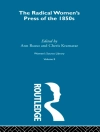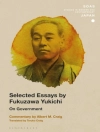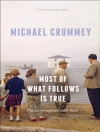Linne R. Mooney, Emeritus Professor of Palaeography at the University of York, has significantly advanced the study of later medieval English book production, particularly our knowledge of individual scribes; this collection honours her distinguished scholarship and responds to her wide-ranging research on Middle English manuscripts and texts.
The thirteen essays brought together here take a variety of approaches – palaeographical, codicological, dialectal, textual, art historical – to the study of the English medieval book and to the varied environments (professional, administrative, mercantile, ecclesiastical) where manuscripts were produced and used during the period 1300-1550. Acknowledging that books and readers are no respecters of borders, this collection’s geographical scope extends beyond England in the east to Ghent and Flanders, and in the west to Waterford and the Dublin Pale.
Contributors explore manuscripts containing works by key writers, including Geoffrey Chaucer, John Gower, John Wyclif, and Walter Hilton. Major texts whose manuscript traditions are scrutinized include
Speculum Vitae, the
Scale of Perfection, the
Canterbury Tales, and
Confessio Amantis, along with a wide range of shorter works such as lyric poems, devotional texts, and historical chronicles. London book-making activities and the scribal cultures of other cities and monastic centres all receive attention, as does the book production of personal miscellanies. By considering both literary texts and the letters, charters, and writs that medieval scribes produced, in Latin and Anglo-French as well as English, this collection celebrates Professor Mooney’s influence on the field and presents a holistic sense of England’s pre-modern textual culture.
Innehållsförteckning
Introduction —
Margaret Connolly
I: International Perspectives
How English is it? —
Martha W. Driver
Middle Hiberno-English Poetry and the Nascent Bureaucratic Literary Culture of Ireland —
Kathryn Kerby-Fulton
II: Identities and Localities
Famous Scribe, Unrecognised Stint —
Ralph Hanna
The Handwriting of Fifteenth-Century Signet Clerks and the King’s French Secretaries —
Sebastian Sobecki
Seeking Scribal Communities in Medieval London —
Estelle V. Stubbs
Scribes and Booklets: The ’Trinity Anthologies’ Reconsidered —
Holly James-Maddocks
III: Scribal Production
Some Codicological Observations on Manuscripts of Walter Hilton’s
Scale of Perfection — Michael G. Sargent
The First Emergence of the Ricardian
Confessio: Morgan 690 —
Joel Fredell
The Anonymous ’Kings of England’ and the Significance of its Material Form —
Margaret Connolly
John Benet, Scribe and Compiler, and Dublin, Trinity College, MS 516 —
Wendy Scase
The Founders’ Book of Tewkesbury Abbey (Oxford, Bodleian Library, MS Top. Glouc. D. 2): Scripts and Transcripts —
Susan Powell
IV: Chaucerian ContextsWhen is a ’
Canterbury Tales Manuscript’ not Just a
Canterbury Tales Manuscript? —
Daniel W. Mosser
Cambridge, Trinity College, MS R.3.15 and the Circulation of Chaucerian Manuscripts in the Sixteenth Century —
Simon Horobin
Afterword: A Personal Tribute —
Derek Pearsall
Linne R. Mooney: List of Publications —
Daryl Green
Om författaren
KATHRYN KERBY-FULTON is Professor Emerita, University of Notre Dame.












